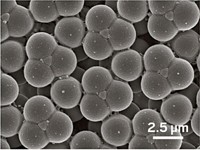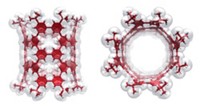Advertisement
Grab your lab coat. Let's get started
Welcome!
Welcome!
Create an account below to get 6 C&EN articles per month, receive newsletters and more - all free.
It seems this is your first time logging in online. Please enter the following information to continue.
As an ACS member you automatically get access to this site. All we need is few more details to create your reading experience.
Not you? Sign in with a different account.
Not you? Sign in with a different account.
ERROR 1
ERROR 1
ERROR 2
ERROR 2
ERROR 2
ERROR 2
ERROR 2
Password and Confirm password must match.
If you have an ACS member number, please enter it here so we can link this account to your membership. (optional)
ERROR 2
ACS values your privacy. By submitting your information, you are gaining access to C&EN and subscribing to our weekly newsletter. We use the information you provide to make your reading experience better, and we will never sell your data to third party members.
Epigenetics
Aromatic bowl molecules could make new electronics
New candidate for organic ferroelectric material
by Sam Lemonick
March 4, 2021
| A version of this story appeared in
Volume 99, Issue 8

A bowl-shaped aromatic molecule could be a template for new flexible electronic materials (Nat. Commun. 2021, DOI: 10.1038/s41467-021-21019-4). Shunsuke Furukawa and Masaichi Saito of Saitama University and Tomoyuki Akutagawa of Tohoku University focused on ferroelectric materials, whose dipole moments can be reversed using an electric field. Ferroelectrics are used in computer memory and in piezoelectric devices, which convert mechanical pressure into electric current. The team sought an organic alternative to conventional ferroelectrics, which contain rare or toxic metals. Scientists have demonstrated ferroelectric bowl-shaped molecules and supramolecular assemblies. Akutagawa, a physicist, was looking for new candidates when he met Furukawa and Saito through a π-aromaticity research project. Akutagawa recognized that low-molecular-weight, bowl-shaped aromatic molecules had ferroelectric possibility, and Furukawa and Saito proposed using variants that they had developed. The group found a sulfur-substituted molecule, CnSS (shown). Stacks of these molecules act as ferroelectrics as the bowl shapes flip inside and out. The researchers hope to find other molecules that will be ferroelectric without needing to be stacked.




Join the conversation
Contact the reporter
Submit a Letter to the Editor for publication
Engage with us on Twitter